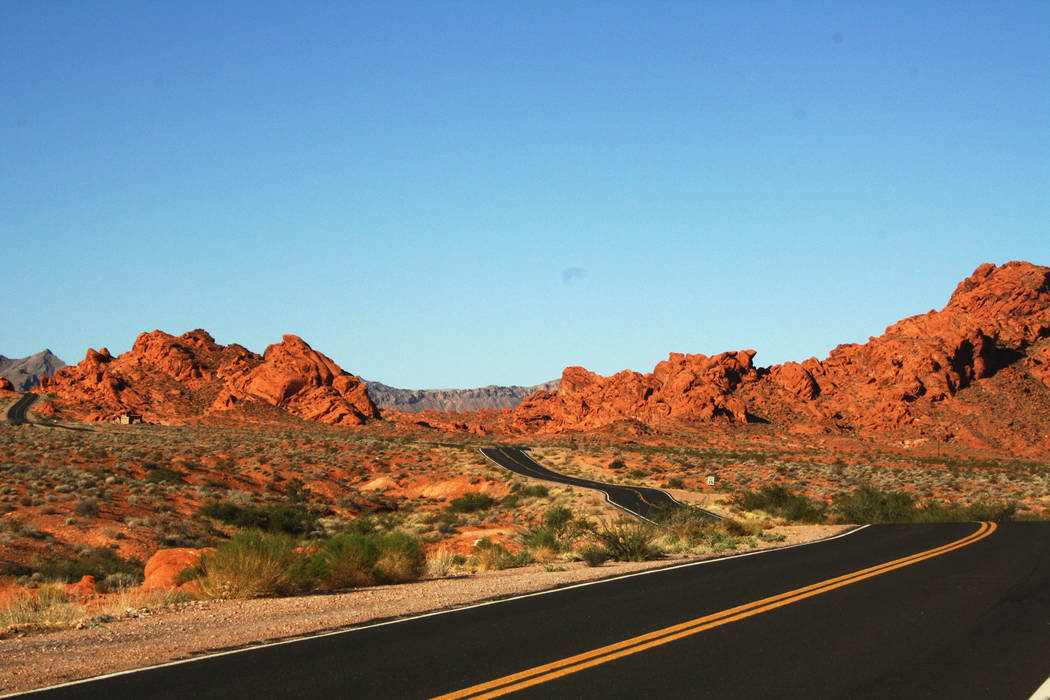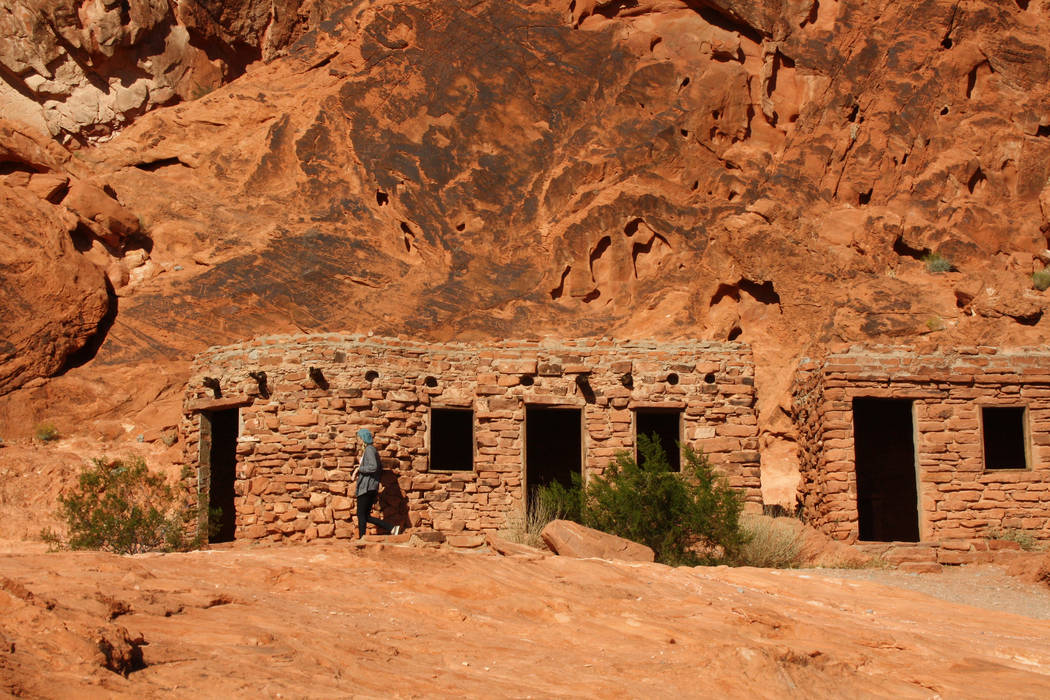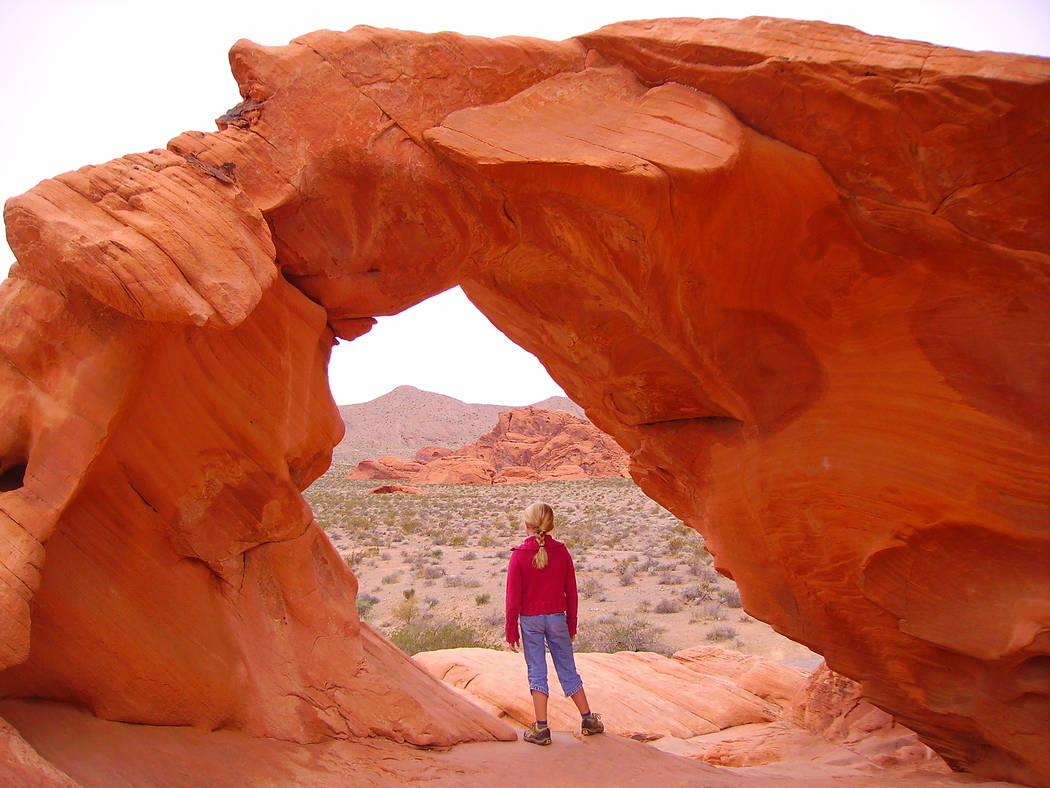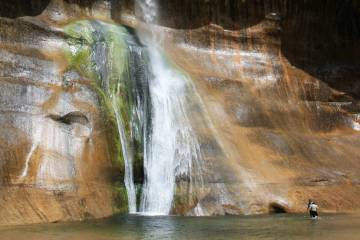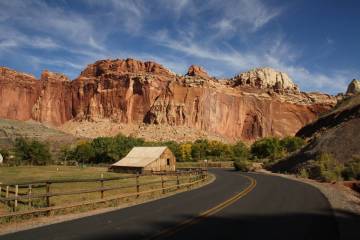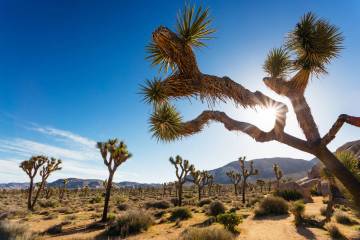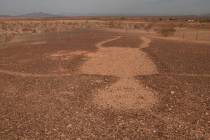Valley of Fire State Park both an hour and a world away
Valley of Fire State Park, a land of fiery red sandstone, is only an hour’s drive from Las Vegas but has plenty to see.
It’s just about perfect for entertaining visitors from the East, for they can see exotic and spectacular scenery, rivaling that in a John Ford Western movie, within very tight limits of time and budget. And if the party happens to include any small children or adults with limited mobility, they can see much of it without walking very far.
Winter is the best time to go, for the weather there is about the same as or a little warmer than in Las Vegas, and most of the landscape is exposed to direct sun.
The park encompasses about 42,000 acres, making it Nevada’s largest state park. It was established in 1935. The best place to start any visit is at the visitor center. Here you can pick up maps and look around at the interpretive displays on the geology, ecology and history of the park. It is interesting to note that the human history in this area dates to 300 B.C with the Basket Maker people.
A few short trails are a must-do if you have the time. The first and most popular is Mouse’s Tank, starting only 1 mile from the visitor center. It is less than 1 mile round-trip and takes you up a sandy wash to “The Tank” itself, passing hundreds of American Indian petroglyphs that were pecked into the sandstone walls surrounding the wash.
The tank is a deep tinaja (water hole), sometimes with plenty of water and sometimes bone-dry. It is named for Mouse, a fugitive Paiute who evaded the law for some time in the 1890s. It is believed he was able to do so by using the seasonal water in the tank.
If you follow the main road about 5½ miles past the Mouse’s Tank trailhead to the end of the road, you’ll find another favorite of mine, the White Domes Loop Trail. This is a 1.25-mile loop that has wonderful formations, including a short but nice slot canyon and evidence of the film industry shooting here many decades ago.
Don’t be discouraged by the beginning of the loop. It’s soft sand and therefore difficult to walk there, but it changes dramatically after five or ten minutes, as you descend into a large flat area. This is where you will find the remains of a movie set constructed in 1965 for “The Professionals,” a popular film starring Burt Lancaster, Lee Marvin and Jack Palance.
From here head south along the trail, then go right in the large obvious wash and the opening to the slot canyon. Walk on through and head up the small rise to continue the trail back to the trailhead.
If you are looking for a fine picnic spot or just a nice place to explore if your group is short on time, head for The Cabins. These are off to the left of the main road that heads east from the visitor center as if you are going toward Lake Mead National Recreation Area. The Cabins were built were built by the federal Civilian Conservation Corps — the famed CCC — right after the park was established. The CCC boys made them from durable native sandstone, so they have survived pretty well. The cabins were originally accommodations for travelers, but now visitors are only allowed to peek inside and look around. Nearby are some petroglyphs to see, especially directly behind the cabins, as well as interesting sandstone formations.
The Park has five official picnic areas, all with shaded areas and restrooms. Beside The Cabins, these are Atlatl Rock, Mouse’s Tank Trailhead, Seven Sisters and White Domes.
To make your visit the best it can be, arrive early so you can enjoy the park at a more leisurely pace without any crowds, and without running out of time these short winter days. The day-use entry fee is $10. The visitor center is open from 8:30 a.m.-4:30 p.m. daily. For more information, call 702-397-2088 or visit parks.nv.gov.
Deborah Wall’s book “Base Camp Las Vegas: 101 Hikes in the Southwest” ($24.95, Imbrifex) is available on Amazon. She can be reached at deborabus@aol.com.
Directions
From Las Vegas take Interstate 15 north about 30 miles to exit 75. Drive east on U.S. Highway 169 for about 18 miles. Go left to the visitor center parking area.



